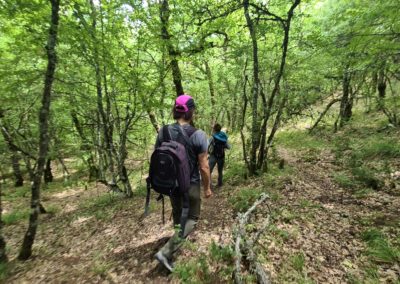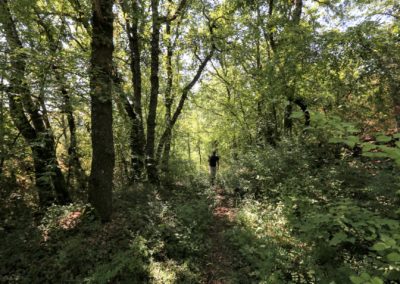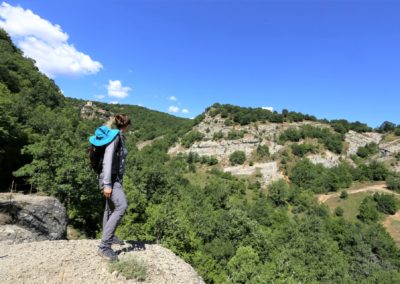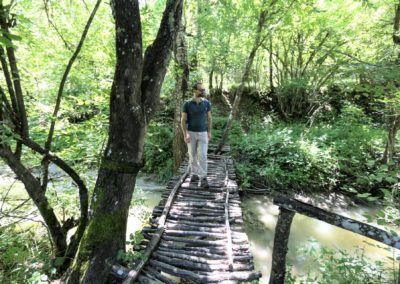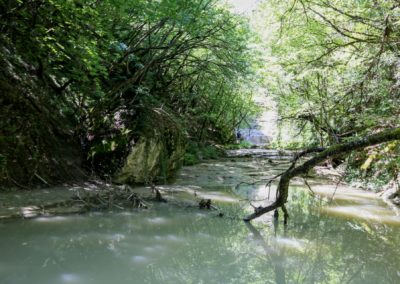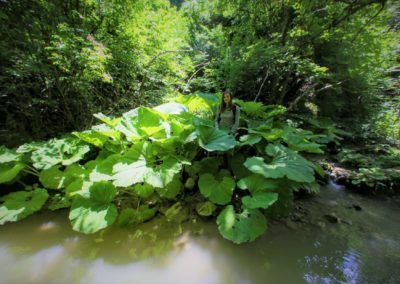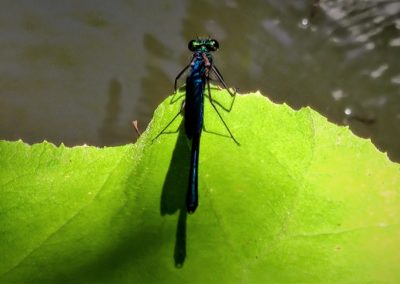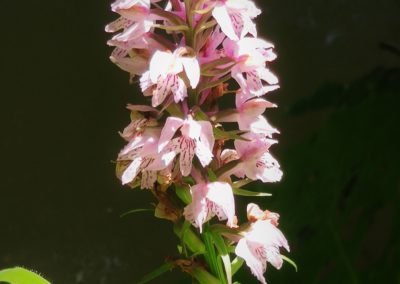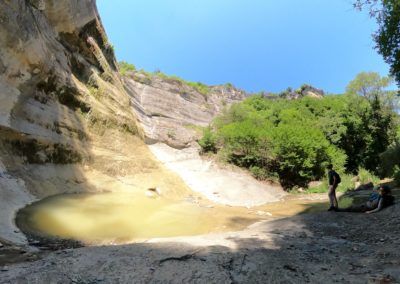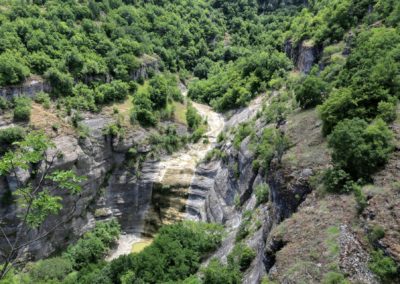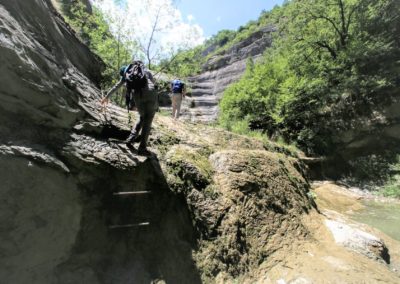This is an easy hike near Nestorio. It is suitable for summer and autumn (the ravine is likely to have a lot of water in winter and spring).
Our trail starts at the main asphalt road 4 km before Nestorio and ends at the base of the large waterfall.
A branch of the route leads to the Taxiarches (Archangels) Monastery, which was built during the Byzantine period.
The route initially traverses through a breezy forest with oak, cherry dogwood and wild hazelnut trees and then follows a rural road for a short distance, which services the Nestorio wheat fields.
We then re-enter the forest, following the ravine from above, without seeing it.
We can have a rest in the area with the wooden benches, before we descend to the stream. A ravine opens up before our eyes and one can immediately sense the presence of water that is not visible, but orchestrates the landscape.
We can see the Monastery of the Taxiarches at Tsouka in a prominent position overlooking the river, by following the axis of the ravine. Round sandstone masses emerge here and there amongst the vegetation, which assume a golden colour in the sun.
The path descends towards the ravine and we are greeted by the silent sound of water, as we approach the river.
We cross the stream over a wooden bridge and emerge at a clearing with wild fruit trees.
We soon encounter a concrete piece from an old irrigation canal. The path divides here. On the left, the path descends to the ravine and the waterfall (there is also a metal sign), and straight up is the branch of the path that leads to the Monastery. (1)
We will continue to the left. The sign at the end of the clearing leads us to the stream. We will follow it closely through the lush riparian vegetation with alder and willow trees and the giant leaves of the aquatic Petasites plant. The luminous damselflies add to the location’s enchantment. We cross the stream a little further down and precisely opposite is a piece of rope indicating the pass for climbing up to the opposite bank. Some metal stairs further on help us to climb a small rock wall and a wonderful water scene immediately appears before us.
The Tsouka waterfall is the gorge’s only waterfall that has been created by Stenorema brook, whose waters flow into the Aliakmon River.
The impressive waterfall with the pond at its base cannot however detract from the presence of the monastery buildings hovering over the cliff.
(1) As we continue straight up from the intersection of the paths we encounter a steep uphill path in a bare field but it soon re-enters the oak forest and continues until it meets a dirt road. We turn right and soon exit at the asphalt road 250 metres outside the monastery.
The road ends at the Zoodochos Pigi Church, which is located on the plateau of the rock top. Until the early 20th century, all of the buildings of the Taxiarches Monastery (temple, cells and dining room) were built in the narrow ledge below the rock top and were only accessible from a single point.
The spacious Zoodochos Pigi Church was constructed a few years after the region was liberated from the Turks. The monastery was fire bombed by the occupying forces in 1943 and suffered extensive damage. The two churches of Taxiarches and Zoodochos Pigi, as well as a one-room building with a dome, have now been preserved from the architectural ensemble.




